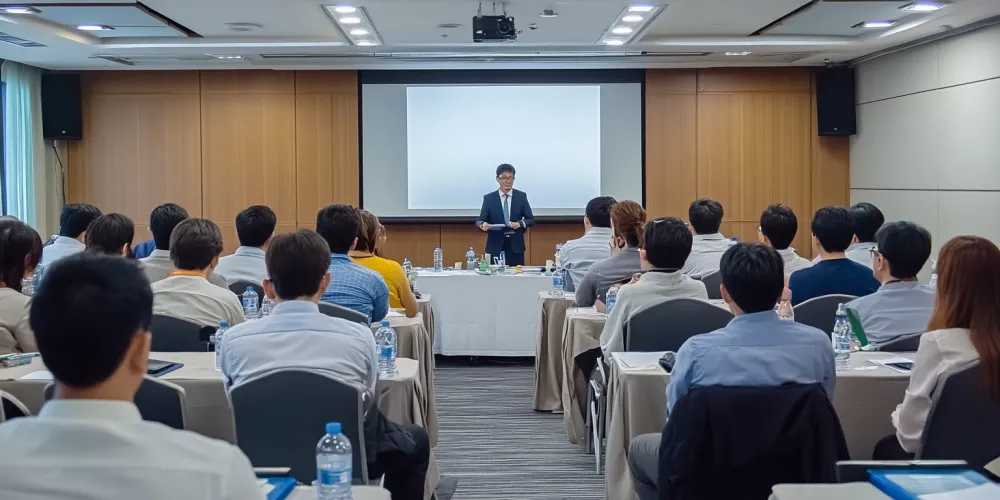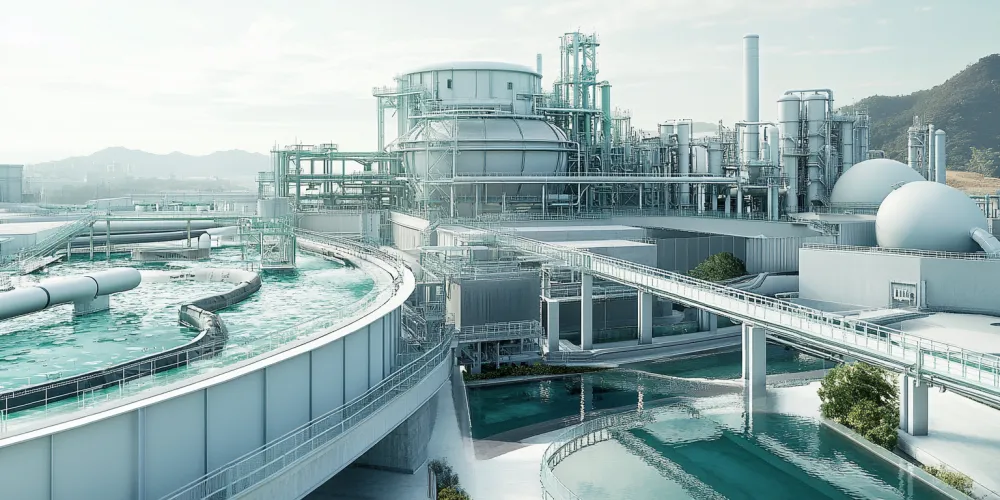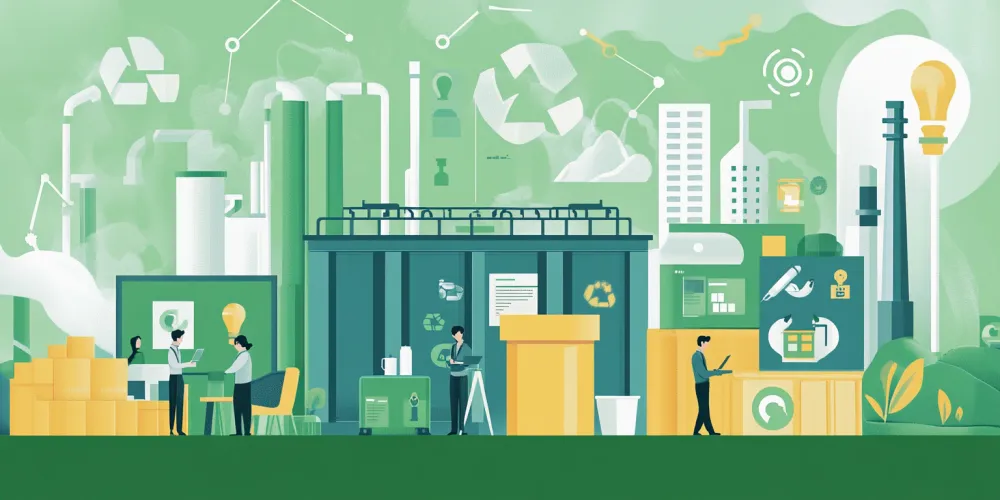Resource Recycling Seminar: Exploring the Latest Technologies and Challenges in R-2501 and R-2502 Waste Treatment
This article was last updated on August 12, 2024

Seminar Background and Significance
"Resource recycling is not only an environmental requirement but also a key driving force for industrial innovation." In Taiwan, with the booming development of the high-tech industry, the treatment of organic solvent waste liquids such as R-2501 and R-2502 has become increasingly prominent. These waste liquids mainly come from high-tech industries such as semiconductors and optoelectronics, characterized by complex compositions and high toxicity. To address this challenge, Taiwan regularly holds resource recycling seminars, bringing together industry elites to discuss the latest treatment technologies and future development directions.
The importance of these seminars is reflected in the following aspects:
- Promotion of technological innovation: Facilitating the exchange and promotion of advanced treatment technologies, exploring the application of AI and big data in waste treatment, and promoting the use of green chemistry in industrial production.
- Supporting industrial upgrading: Enhancing the international competitiveness of Taiwan's high-tech industries, driving the development of the environmental technology industry, and creating new employment opportunities and economic growth points.
- Improving environmental policies: Providing a scientific basis for the establishment of stricter emission standards, promoting industrial cooperation, optimizing resource recycling mechanisms, and advancing the implementation of circular economy concepts in the industry.
The convening of such seminars not only reflects Taiwan's emphasis on environmental protection but also demonstrates the determination to collaborate in the face of technical challenges. By pooling wisdom from all sides, the seminar aims to find innovative solutions to the challenges of treating R-2501 and R-2502 waste liquids and contribute to Taiwan's sustainable development.
Characteristics and Treatment Challenges of R-2501 and R-2502 Waste Liquids
"Understanding the characteristics of waste liquids is the first step in innovating treatment technologies; challenges and opportunities coexist." As important by-products of Taiwan's semiconductor and optoelectronics industries, the treatment of R-2501 and R-2502 waste liquids has long been a major challenge in the field of environmental protection. The characteristics and treatment difficulties of these two waste liquids mainly include:
- Complex chemical composition: Contains multiple organic solvents such as N-methyl-2-pyrrolidone (NMP), acetone, and isopropanol, common metal ion pollutants such as copper, nickel, and lead, with large pH variations, increasing the difficulty of treatment.
- High toxicity and volatility: Potentially harmful to human health and the ecological environment, volatility increases the difficulty of collection and storage, and strict control of secondary pollution is required during treatment.
- High treatment cost: Traditional treatment methods are energy-intensive and inefficient, requiring significant equipment investment, high operating costs, and low economic value of the treated by-products.
Faced with these challenges, environmental technology companies in Taiwan have been actively seeking breakthroughs. For example, the development of multiphase catalytic oxidation technology has not only improved treatment efficiency but also significantly reduced energy consumption. However, despite some progress, the treatment of R-2501 and R-2502 waste liquids still faces many challenges:
- Technical bottlenecks: Efficient and low-consumption separation technologies need to be developed, selective removal of specific organics remains difficult, and the detection and removal of trace heavy metals in waste liquids pose significant challenges.
- Increasing environmental standards: Taiwan continuously tightens emission standards, with higher treatment effectiveness requirements, stricter demands for green production in international markets, and increased public attention to corporate environmental performance.
- Economic feasibility: The development and application costs of high-efficiency treatment technologies remain high, the reuse value of treated products needs to be improved, and small and medium-sized enterprises find it difficult to afford advanced treatment equipment.
Experts agree that future technological development should move toward more efficient, economical, and environmentally friendly directions. This requires not only technological innovation but also policy support and collaborative efforts across the entire industrial chain.
Latest Treatment Technologies and Innovation Directions
"Innovation is the golden key to solving environmental challenges, and technological progress will open new avenues for industrial development." In recent years, significant progress has been made in R-2501 and R-2502 waste liquid treatment technologies. These breakthrough technologies have not only improved treatment efficiency but also greatly reduced environmental risks and economic costs. The main technological highlights include:
- Optimization of advanced oxidation technologies (AOPs): Improved photocatalytic oxidation efficiency with degradation rates exceeding 99%, electrochemical oxidation technology achieves low energy consumption and high efficiency, and the combination of ozone oxidation and biological treatment significantly enhances treatment effects.
- Innovative applications of membrane separation technology: Nanomembrane technology achieves efficient separation of specific organics, membrane distillation technology shows great potential in organic solvent recovery, and the development of intelligent membrane systems increases the automation level of the separation process.
- Breakthroughs in biological treatment technology: Screening and cultivation of special strains improve biodegradation efficiency, immobilized enzyme technology achieves significant progress in organic degradation, and the combination of bio-enhancement technology with physicochemical methods realizes synergistic treatment.
- Resource recycling technology development: Improvements in solvent regeneration technology increase recovery rates to over 95%, breakthroughs in selective recovery of metals from waste liquids, and development of derivative products from waste liquids, such as the production of bioplastics.
Among these technologies, the developed multiphase catalytic oxidation technology has garnered significant industry attention. By optimizing catalyst design and reactor structure, this technology achieves highly efficient treatment of R-2501 and R-2502 waste liquids, increasing treatment efficiency by 50% compared to traditional methods while reducing energy consumption by 30%.
In addition to specific treatment technologies, future innovation directions also include:
- Intelligent and automated systems: Using AI technology to optimize treatment parameters and improve efficiency, developing intelligent monitoring systems for real-time monitoring of the entire process, and promoting the application of IoT technology in waste liquid management.
- Application of green chemistry: Developing environmentally friendly solvents to reduce harmful waste liquid generation at the source, promoting clean production technologies in the semiconductor industry, and exploring the potential for bio-based solvents to replace traditional industrial solvents.
- Construction of a circular economy model: Establishing an industrial ecosystem for waste liquid treatment to achieve efficient resource utilization, developing derivative products from waste liquids to increase the economic benefits of resource utilization, and promoting cross-industry cooperation for waste recycling.
These innovation directions not only provide new ideas for R-2501 and R-2502 waste liquid treatment but also point the way forward for the development of the entire environmental protection industry. The industry widely believes that through technological innovation, Taiwan is expected to establish a global leading technological advantage in the field of waste liquid treatment.
Policy Support and Industry Collaboration
"Policy is the booster for industrial development, and collaboration is the catalyst for technological progress." In the process of advancing the progress of R-2501 and R-2502 waste liquid treatment technologies, government policy support and industry chain collaboration play a key role. In recent years, Taiwan has made various efforts in this regard, including:
- Policy support measures: The Environmental Protection Administration (EPA) has revised the Water Pollution Control Act to strengthen the management of special waste liquids, the Ministry of Economic Affairs has launched the "Green Process Technology Guidance Program" to encourage enterprises to upgrade environmental protection equipment, and the Ministry of Science and Technology has set up the "Environmental Technology Research Project" to support basic research on waste liquid treatment technologies.
- Improvement of regulatory systems: Establishing technical specifications for the treatment of R-2501 and R-2502 waste liquids, standardizing treatment processes, creating a traceability system for waste liquid treatment, strengthening comprehensive supervision, and promoting "Green Label" certification to encourage enterprises to adopt resource recycling technologies.
- Industry-academia-research collaboration mechanism: Establishing the "Semiconductor Waste Liquid Resource Alliance" to promote industry-academia-research cooperation, supporting the establishment of related research centers, strengthening research and development of environmental technologies, and encouraging cooperation between enterprises and research institutions to accelerate technological innovation.
- International cooperation and exchange: Participating in the APEC Environmental Technology Exchange Program to absorb international advanced experience, establishing environmental technology exchange mechanisms with Japan, South Korea, and other countries, promoting Taiwan's environmental protection technologies and products to "go global," and expanding international markets.
The implementation of these policy support and industry collaboration measures will create a favorable external environment for the development of R-2501 and R-2502 waste liquid treatment technologies. The industry generally believes that only through joint efforts can true technological breakthroughs and industrial upgrades in waste liquid treatment be achieved, contributing to Taiwan's sustainable development.
Future Outlook and Action Recommendations
"Facing challenges, we must not only have vision but also the courage to take action." With in-depth research on the treatment of R-2501 and R-2502 waste liquids, the industry has reached a broad consensus on its future development. Despite numerous challenges, Taiwan is expected to establish a global competitive advantage in this field through technological innovation and policy support.
To achieve this goal, experts have put forward a series of forward-looking prospects and actionable recommendations:
- Technology development roadmap: Formulate medium and long-term technology development plans for the treatment of R-2501 and R-2502 waste liquids, identify key technology breakthroughs such as efficient separation and intelligent control, set phased goals, and promote continuous technological progress.
- Construction of an industrial ecosystem: Cultivate specialized waste liquid treatment service companies to form a large-scale industry, promote the integration of waste liquid treatment with the resource recycling industry, establish an industrial alliance for waste liquid treatment, and facilitate technology and resource sharing.
- Talent cultivation strategy: Strengthen the construction of related majors in universities, cultivate interdisciplinary talents, establish industry-academia cooperation mechanisms for talent training, improve practical capabilities, attract international talent, and promote technological exchange and innovation.
- International cooperation and standard-setting: Actively participate in the formulation of international environmental technology standards, strengthen cooperation with leading international enterprises and research institutions, and promote the internationalization of Taiwan's waste liquid treatment technologies and standards.
- Investment and financing support: Establish special funds to support the research and development and industrialization of waste liquid treatment technologies, encourage venture capital to enter the environmental technology field, and improve financing channels for listed environmental technology companies.
Among these prospects and suggestions, it is recommended to increase R&D investment to 8% of revenue within the next five years, focusing on research into more efficient and environmentally friendly treatment processes. Experts emphasize that achieving these goals requires joint efforts from the entire society. The government should continue to improve policy support, enterprises need to increase R&D investment, research institutions should deepen basic research, and the public needs to raise environmental awareness and support green products. Only by working together can Taiwan achieve breakthroughs in the key area of R-2501 and R-2502 waste liquid treatment, addressing local environmental issues and potentially bringing related technologies and products to the international market, contributing to global environmental protection.
Experts call for a forward-looking vision and down-to-earth actions in the face of environmental challenges. Starting now, every small progress will accumulate into a significant leap in the future. Let us work together to contribute to Taiwan's sustainable development and the beautiful future of our planet.

